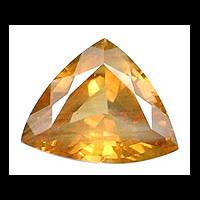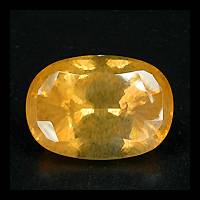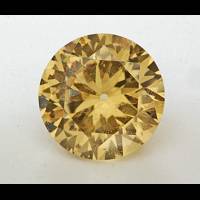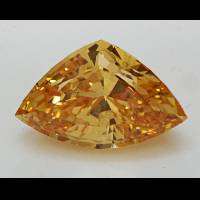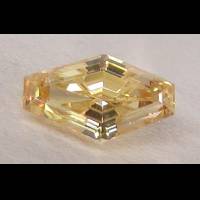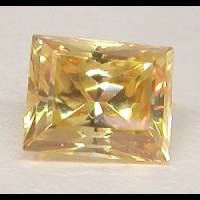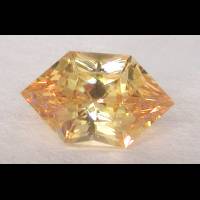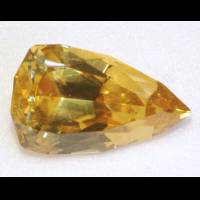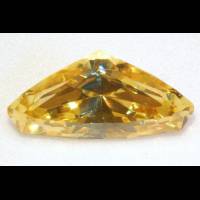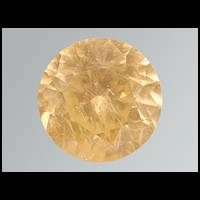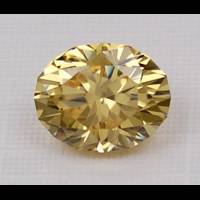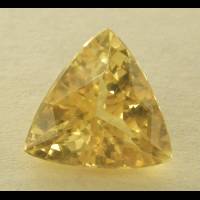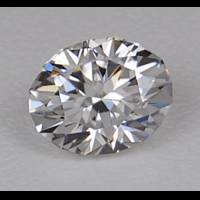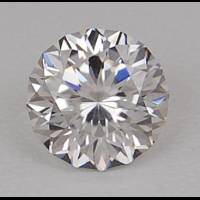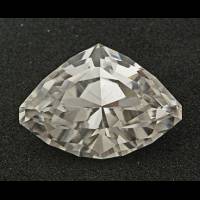Scheelite

China
17.85 carats
© Rarestone.com
Well-formed crystals are fashioned into gemstones. They have high lustre and appreciable "fire", approaching that of Diamond. Gems cut from transparent material are fragile.
A magnificent gem weighing 58 carats was faceted from transparent orange material found in the Gamsberg area in Namibia.
Scheelite Gemstones by Colour
This table shows the variety of hues this gemstone can be found in. Click on a photo for more information.
Scheelite Gemstones by Size
This table shows distribution of Scheelite gemstone sizes that are listed on this site. This can give a good indication as to the general availability of this gemstone in different sizes.
Contributed photos
Lightest:1.83 cts
Heaviest:52.13 cts
Average:12.30 cts
Total photos:21
Do you have a larger Scheelite? Why not upload a photo?
Significant stones
Turmalina Scheelite267 cts
| General Information | |||||||||||||||||||||||||||||||||
|---|---|---|---|---|---|---|---|---|---|---|---|---|---|---|---|---|---|---|---|---|---|---|---|---|---|---|---|---|---|---|---|---|---|
| Chemical Formula |
| ||||||||||||||||||||||||||||||||
| Significant stones | |||||||||||||||||||||||||||||||||
| |||||||||||||||||||||||||||||||||
| Synthetic Scheelite | |||||||||||||||||||||||||||||||||
| Synthetic scheelite - Colours: red, red-brown, yellow-brown, yellow, green, violet, colourless; Transparent; Hardness 4.5 - 5; Cleavage - distinct; RI 1.918 - 1.934; Birefringence 0.016; Uniaxial/+; SG 5.90 - 6.10; Fluorescence: LW red to orange-red; SW pink, blue or bluish-white - Gemmological Tables, Ulrich Henn and Claudio C. Milisenda, 2004, p 29 | |||||||||||||||||||||||||||||||||
| Physical Properties of Scheelite | |||||||||||||||||||||||||||||||||
| Mohs Hardness | 4.5 to 5, Blue Chart Gem Identification (2010) More from other references | ||||||||||||||||||||||||||||||||
| Specific Gravity | 5.9 to 6.3, Gemstones of the world (2001) More from other references | ||||||||||||||||||||||||||||||||
| Tenacity | Brittle, Gemstones (2009) | ||||||||||||||||||||||||||||||||
| Cleavage Quality | Good, Gemstones of the world (2001) More from other references | ||||||||||||||||||||||||||||||||
| Fracture | Conchoidal,Splintery, Gemstones of the world (2001) More from other references | ||||||||||||||||||||||||||||||||
| Optical Properties of Scheelite | |||||||||||||||||||||||||||||||||
| Refractive Index | 1.918 to 1.936, Blue Chart Gem Identification (2010) More from other references | ||||||||||||||||||||||||||||||||
| Optical Character | Uniaxial/+, Blue Chart Gem Identification (2010) More from other references | ||||||||||||||||||||||||||||||||
| Birefringence | 0.010 to 0.018, Blue Chart Gem Identification (2010) More from other references | ||||||||||||||||||||||||||||||||
| Pleochroism | Variable, Gemstones of the world (2001) More from other references | ||||||||||||||||||||||||||||||||
| Dispersion | 0.038, Gems, Sixth Edition (2006) More from other references | ||||||||||||||||||||||||||||||||
| Colour | |||||||||||||||||||||||||||||||||
| Colour (General) | Colourless, yellow, yellowish-white, gray, orange, brown, Gemmological Tables (2004) More from other references | ||||||||||||||||||||||||||||||||
| Causes of Colour | Yellow, Fe, Pragmatic Spectroscopy For Gemologists (2011) | ||||||||||||||||||||||||||||||||
| Transparency | Transparent, Gemmological Tables (2004) More from other references | ||||||||||||||||||||||||||||||||
| Lustre | Adamantine, Gems, Sixth Edition (2006) More from other references | ||||||||||||||||||||||||||||||||
| Fluorescence & other light emissions | |||||||||||||||||||||||||||||||||
| Fluorescence (General) | Strong; light blue, Gemstones of the world (2001) | ||||||||||||||||||||||||||||||||
| Fluorescence (Short Wave UV) | Strong light to medium blue (also yellow. Synthetic: pink to (chalky)-blue, Blue Chart Gem Identification (2010) More from other references | ||||||||||||||||||||||||||||||||
| Fluorescence (Long-Wave UV) | Inert. Synthetic: strong (orangy)-red, Blue Chart Gem Identification (2010) | ||||||||||||||||||||||||||||||||
| Crystallography of Scheelite | |||||||||||||||||||||||||||||||||
| Crystal System | Tetragonal, Blue Chart Gem Identification (2010) More from other references | ||||||||||||||||||||||||||||||||
| Habit | Pseudooctahedral crystals, Gems, Sixth Edition (2006) More from other references | ||||||||||||||||||||||||||||||||
| Geological Environment | |||||||||||||||||||||||||||||||||
| Where found: | Scheelite occurs in contact metamorphic deposits, hydrothermal veins or pegmatites., Gems, Sixth Edition (2006) | ||||||||||||||||||||||||||||||||
| Further Information | |||||||||||||||||||||||||||||||||
| Mineral information: | Scheelite information at mindat.org | ||||||||||||||||||||||||||||||||
| Significant Gem Localities | |||||||||||||||||||||||||||||||||
| |||||||||||||||||||||||||||||||||


